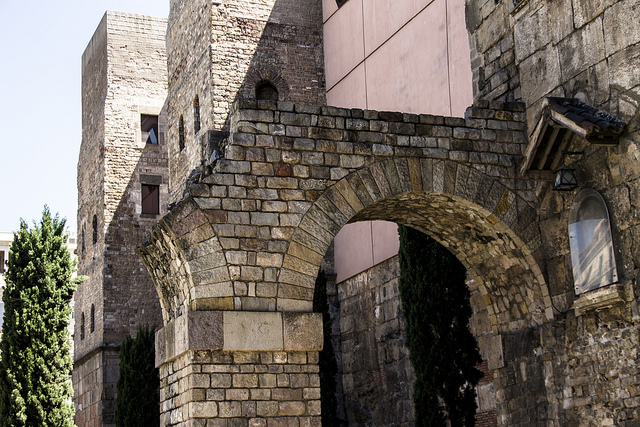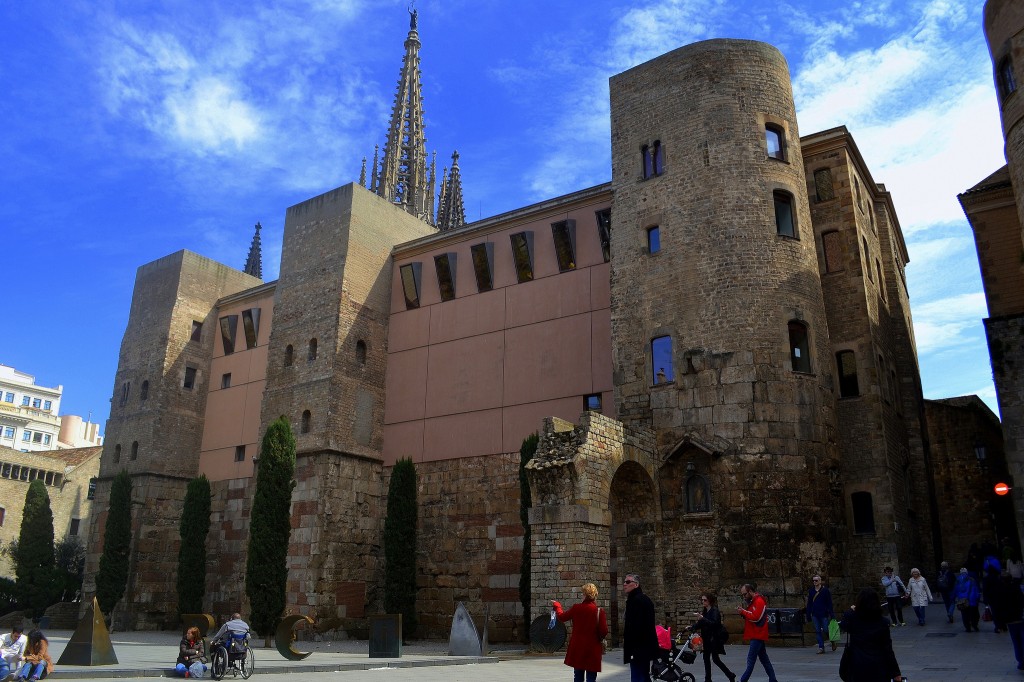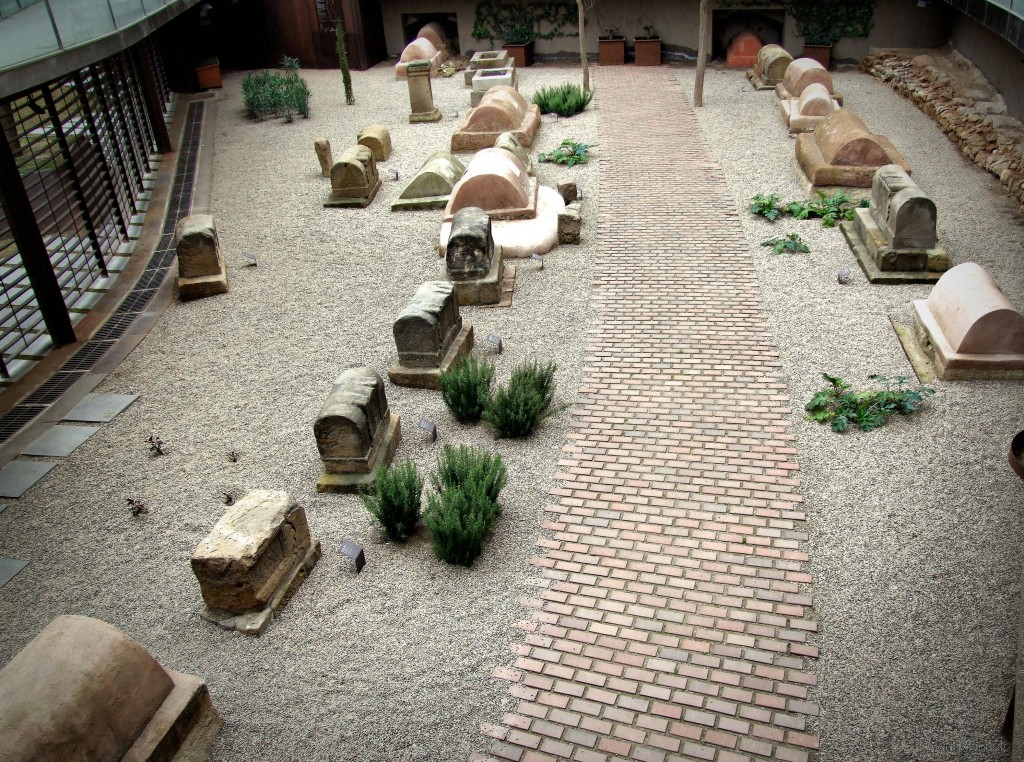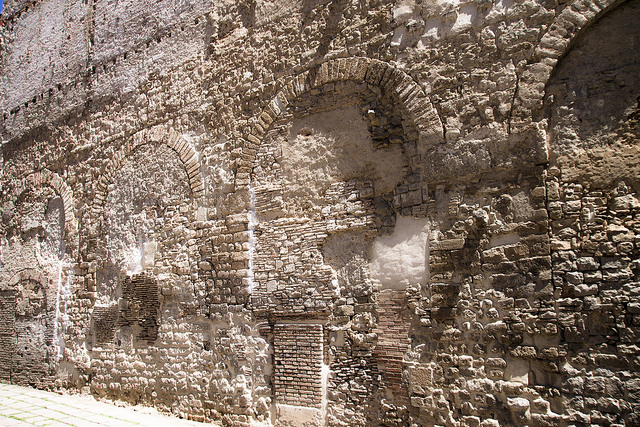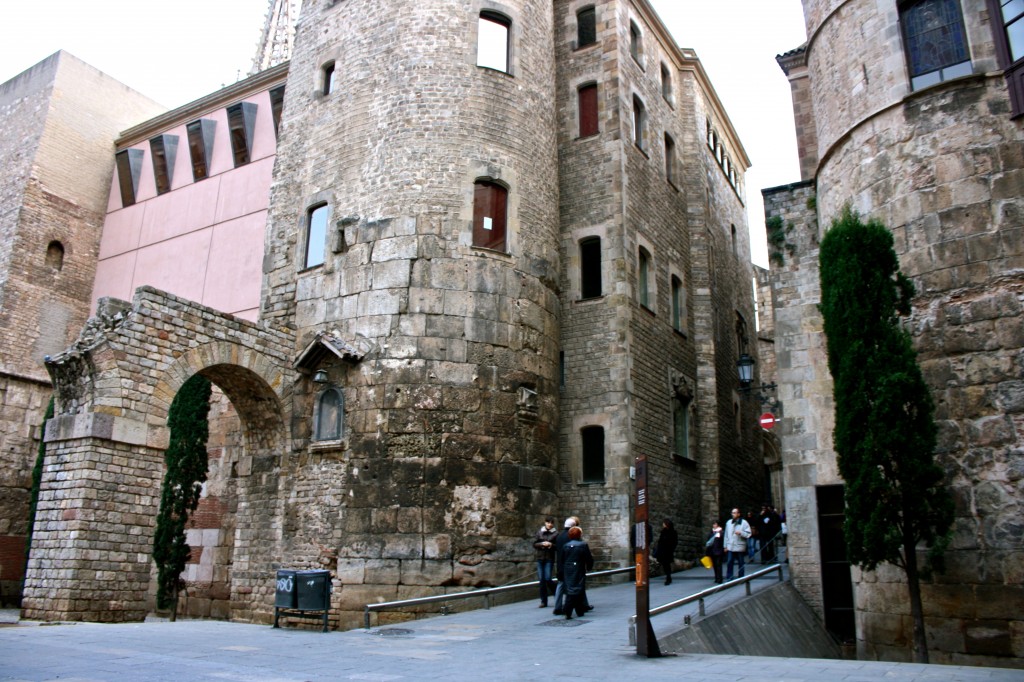Barcelona, like other cities of the world, has an historical background characterized by its urban architecture and its people’s lifestyle. An important fact is that most of the popular streets of the city lie over the Roman streets of Barcino, as Barcelona was known in the firsts centuries. The city was born on a hill and it grew up successfully thanks to its closeness to the sea and the commercial exchange.
The Roman Temple of August
There is a secret inside the Gòtic neighborhood: the four columns of the roman temple of August. These are the only remaining parts of the emperor’s temple and they are hidden inside a small medieval courtyard, next to Sant Jaume square. In that area, just when the Paradís street ends and we reach Sant Jaume square, we find the spot where the two main streets of Barcino met. At the end of the street, we find the “plaça del Rei” and the Barcelona’s History Museum which it has the European’s biggest subterranean excavation of Roman archaeological sites.
The Necropolis
As it was usual for the Romans, the burial spaces where located on the streets outside the access to the city. In the Vila de Madrid square (in between la Rambla and Portal de l’Àngel street), 70 graves remain from the II and III century. The necropolis was discovered during the construction of the modern square in 1950.
The Roman Aqueduct of Barcelona
The roman cities needed a big amount of water to supply its fountains and thermal baths and the aqueduct of Barcelona converged in the city wall. If we walk through Duran i Bas street we will find four aqueduct arches which brought the water from Montcada to Barcelona.
Roman City Hall
With no doubt, the city wall is the most important reminder of the Roman life in Barcelona. Even thought 2/3 of the city wall are still hidden, this defensive construction has 2000 years of history and it’s the biggest sight of Barcelona. We can follow the city wall from Nova square, through the Avinguda de la Catedral, the Àngel square or the Traginers square, where we will be able to see a roman tower and an edge of the antique city wall, both in perfect conservation conditions.
If we go for a walk around the city center we will find, in any corner, other Roman ruins like the fourth door of del Mar in Regomir square, or the Roman Forum close to the Palau de la Generalitat. Also, we will find shops and cafés with antique ruins on them, like La Granja, that offers coffee and hot chocolate surrounded by pieces of the roman city wall. We encourage you to discover another shops and stores with pieces of the history of Barcelona!
Europe falls. It contains amazing cities full of culture, history and leisure services that are perfect for tourism. This is the case of Barcelona, the famous “Barcelona” and the case of Prague, a city that seems out of a fairy tale, this is the reason that both sites are the most visited in the whole continent and in fact, every year millions of people decide to seek an accommodation in Barcelona or accommodation in Prague to discover from beginning to end.
Cover photo: S BP
MH Apartments
www.mhapartments.com

